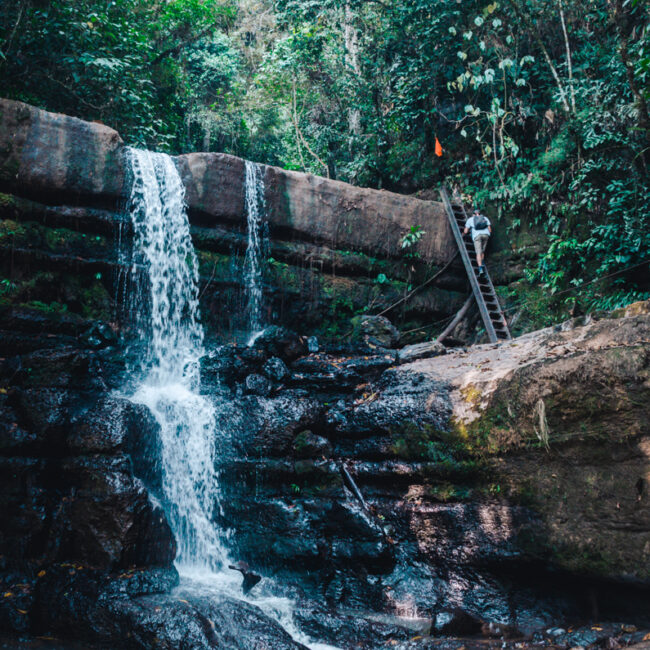

San Agustin is a lovely little city located in the Colombian Massif of the southwestern Andes Mountains. Foreign travelers often overlook it but this city is located in one of the most wonderful regions of Colombia. It is an area full of mysticism since it is the location of the San Agustin Archaeological Park. This park boasts a collection of pre-Colombian statues and tombs that date back to the 1st and 8th centuries AD. In this post, you can find everything you need to know about San Agustin Archaeological Park!
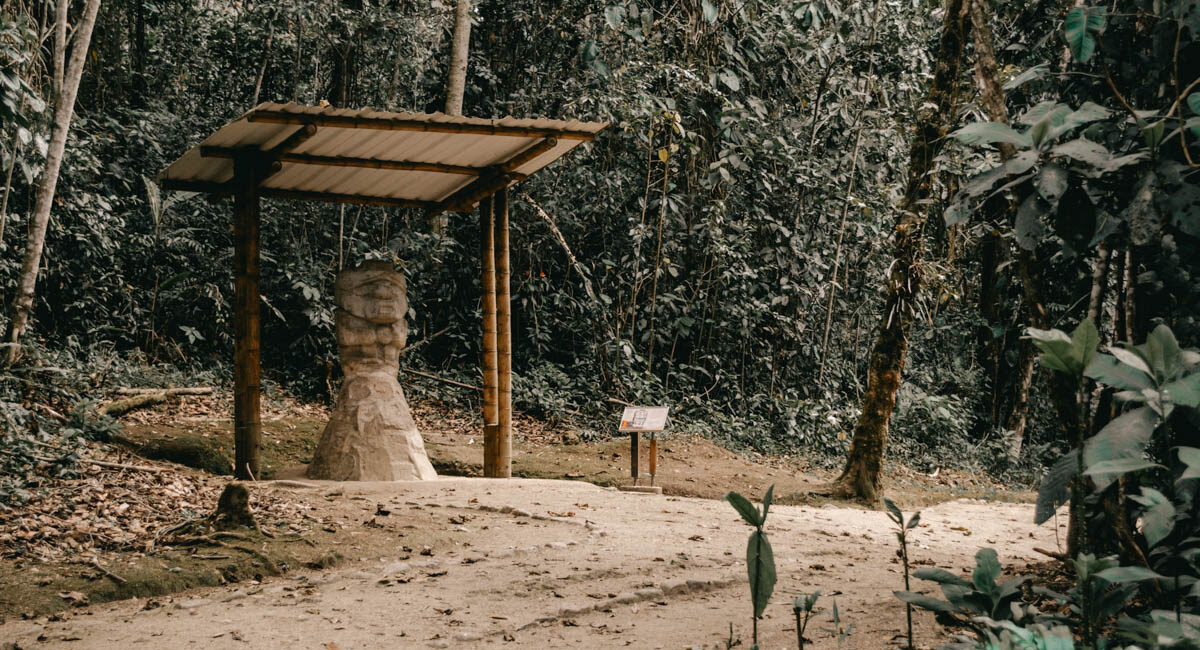
Statues in the bushes, San Agustin Archaeological Park
San Agustin Archaeological Park has been a remarkable UNESCO World Heritage Site in Colombia since 1995. It is a great site where you can discover the spirituality and habits of a pre-Columbian culture in southern Colombia.
Located in the majestic Andes mountains in the Huila Department, it showcases over 500 monolithic sculptures, each telling a story from a civilization that thrived between the 1st and 8th centuries AD.
These marvelous figures, varying in size and depicting a mix of humans, animals, and mythical beings, offer a glimpse into the artistic and religious life of this ancient society. Alongside these sculptures, the site also boasts an array of funerary structures and tombs.
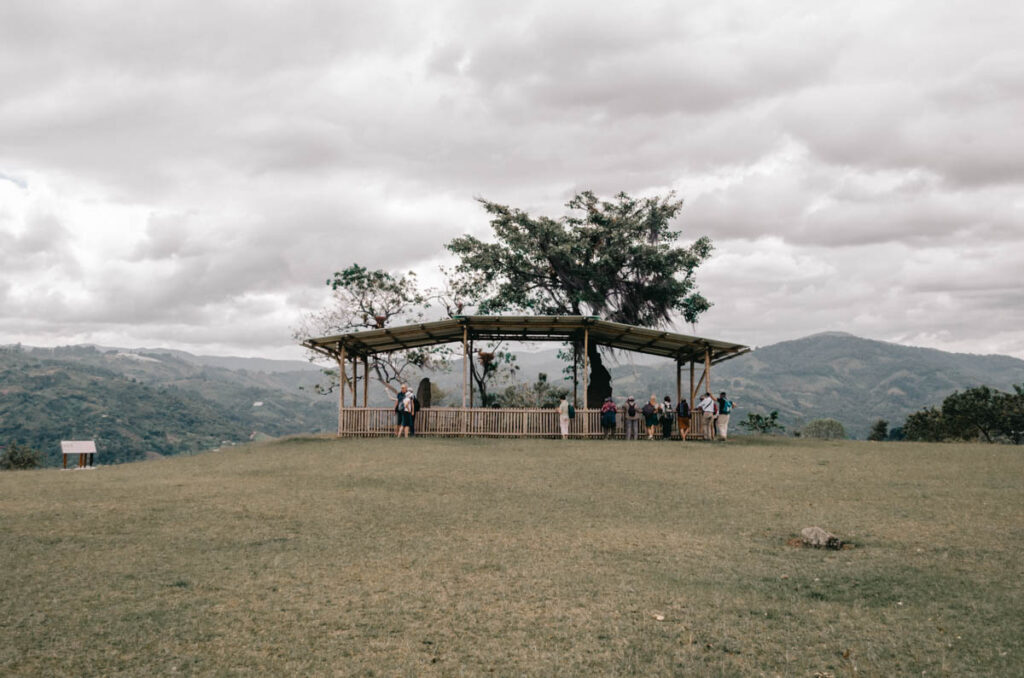
Alto de las Lavapatas
The statues at San Agustin Archaeological Park are believed to have been created by a pre-Columbian culture that flourished between the 1st and 8th centuries AD. This places the age of the statues at approximately 1,200 to 2,000 years old.
The history of San Agustin Archaeological Park, particularly its discovery and the interpretations of its statues, is as fascinating as it is complex! The existence of the San Agustin site has been known locally for centuries, but it wasn’t until the 20th century that it gained broader attention.
Archaeologists and explorers began conducting more systematic studies of the area in the early 1900s. The most significant exploration and documentation efforts occurred in the mid-20th century, which led to a greater understanding and appreciation of the site’s cultural and historical importance.
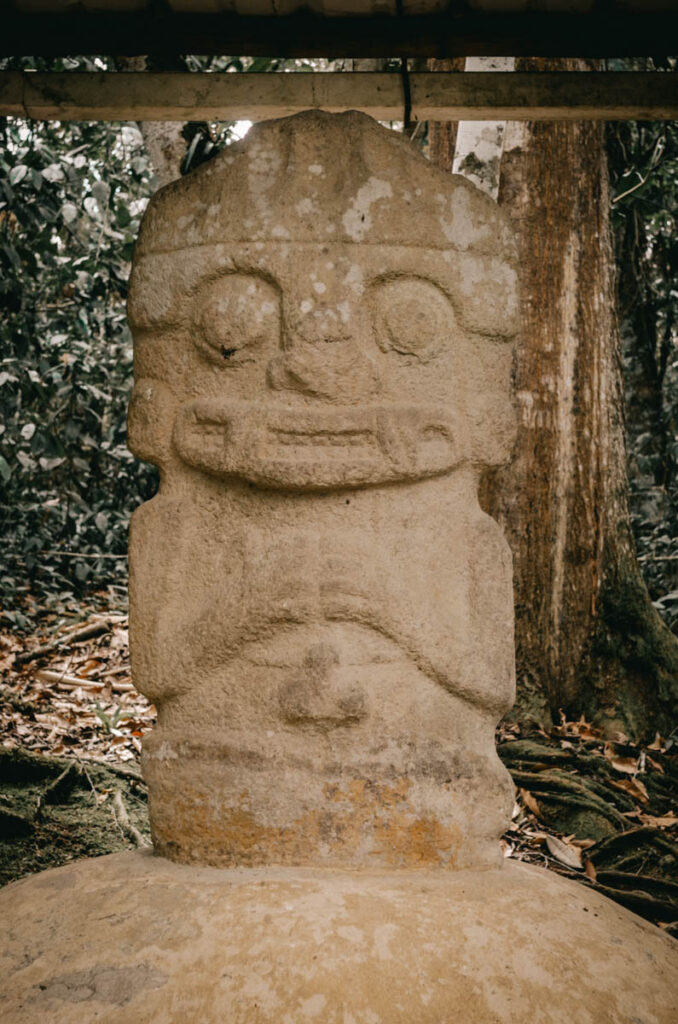
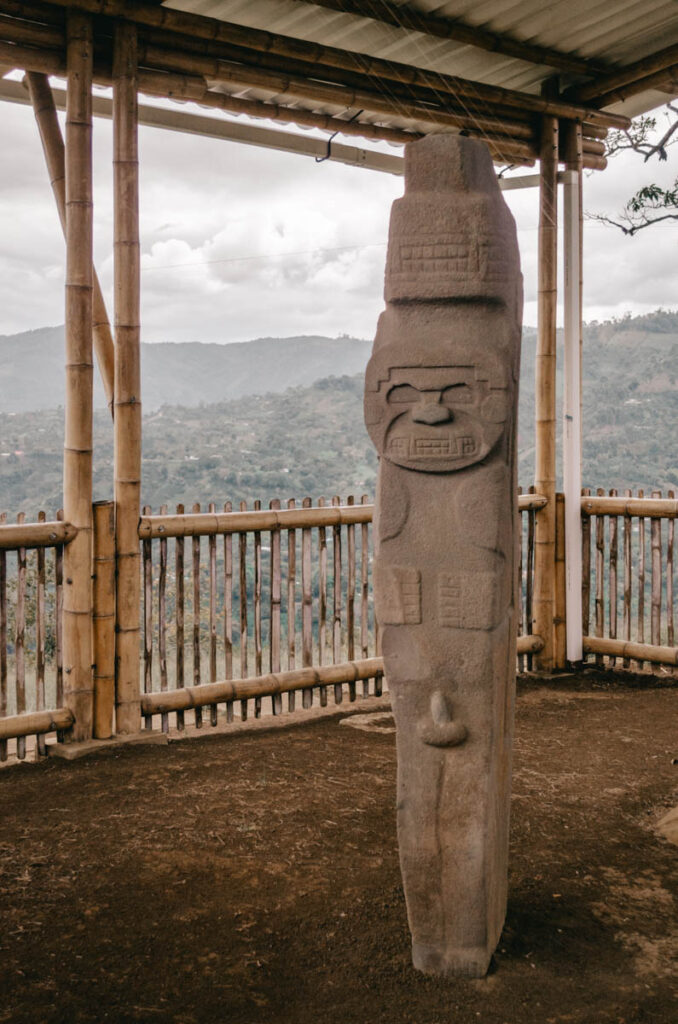
Statues inside San Agustin Archaeological Park
The statues are known for their enigmatic forms, depicting a range of figures including humans, animals, and mythical creatures. They are believed to have had significant religious and ceremonial importance.
Many of the figures are thought to represent deities, ancestors, or mythical beings from the belief system of the ancient people who created them. Some statues are associated with funerary practices, suggesting they played a role in rituals related to death and the afterlife.
The culture that created these statues is not well understood, mainly due to the lack of written records. However, the complexity and sophistication of the sculptures suggest a society with advanced artistic skills and deep spiritual beliefs.
Today, archaeologists continue to study the site to uncover more about the people who lived there, their way of life, and the meanings behind the statues. For now, it still remains a mystery!
→ Also read: Cocora Valley, Colombia: All You Need to Know
San Agustin Archaeological Park consists of several sites that are scattered across the town and in the further area. Some of the statues were relocated to the main archaeological park while others can still be found in their original location.
Here are the main archaeological sites that you can find in and around San Agustin!
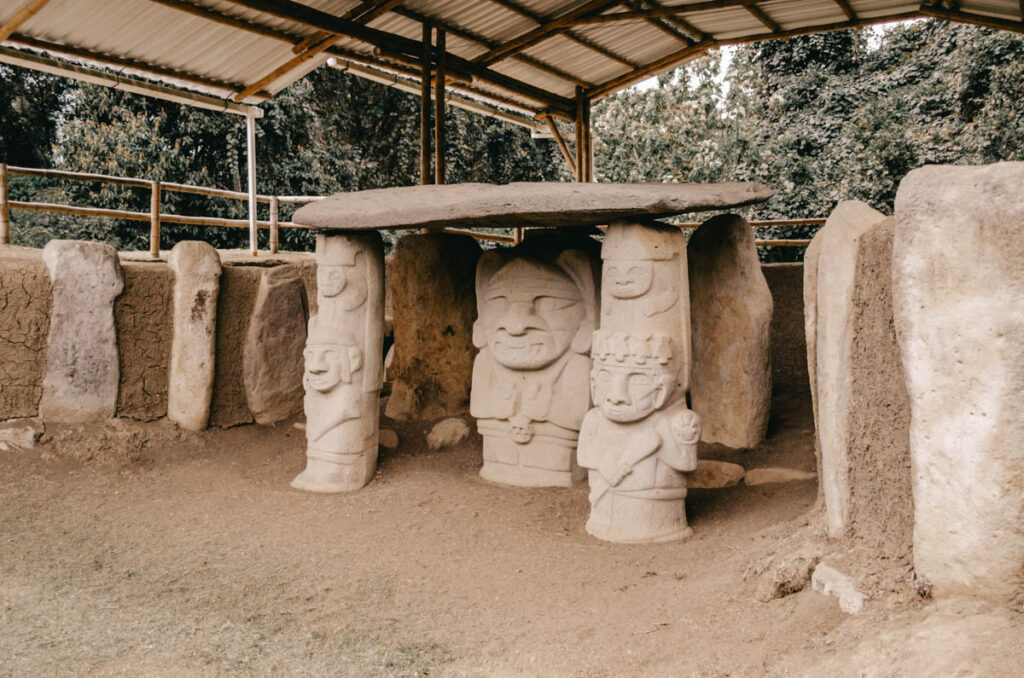
Burial grounds on the hills
This is the main area of the park, featuring the largest collection of religious monuments and megalithic sculptures. It includes the famous “Bosque de las Estatuas” (Forest of Statues), where many of the park’s most iconic sculptures are displayed in a natural setting. This was easily one of my favorite places.
Upon arrival, you will first be guided through the archaeological museum that provides a bit of context and information about the artifacts and the culture that created them.
After walking through the statue forest you can explore the other mesitas of the park. These small terraces contain various statues, burial mounds, and ceremonial centers. Furthermore, you can find the Fuente de Lavapatas, a network of channels and pools carved into the bedrock which is believed to have been used for religious ceremonies involving water.
Lastly, the Alto de Lavapatas is a hilltop site that provides a panoramic view of the surrounding area and contains more statues and religious monuments.
Alto de los Idolos is an integral part of the broader San Agustin Archaeological Park. It is, however, located well out of San Agustin near the town of Isnos. It is a smaller and more remote site, offering a different, often quieter experience compared to the main park.
This site has a notable concentration of funerary structures, including tombs and burial mounds, which are closely associated with the statues.
Some statues at Alto de los Ídolos are better preserved than those at the main site. Additionally, traces of original paint have been found on some sculptures, providing insights into the use of color, which is not as evident in the main park.
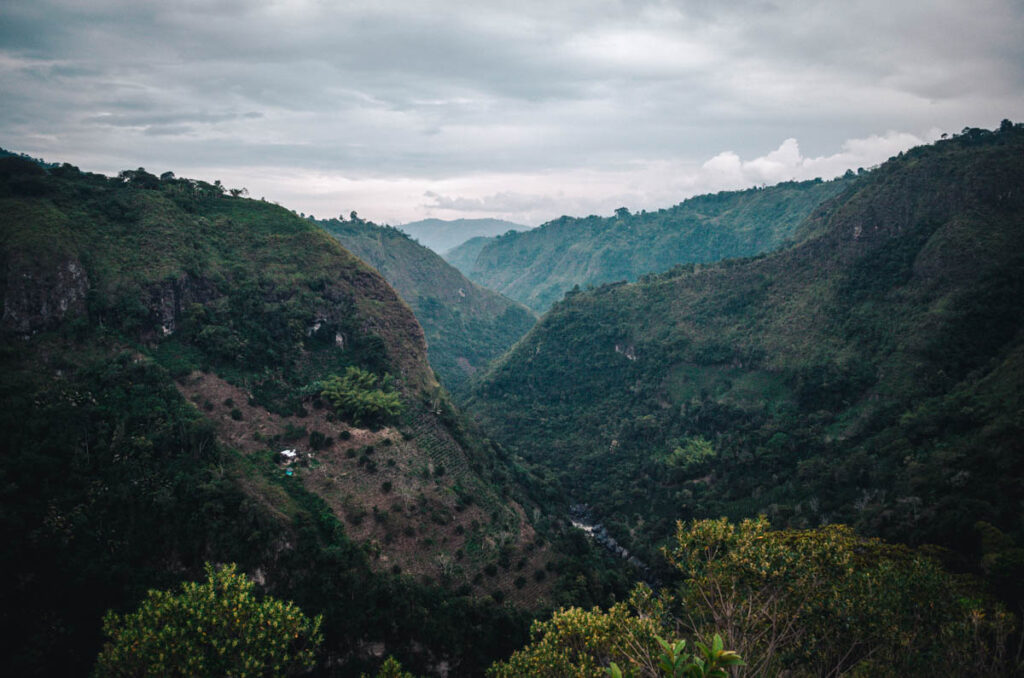
The Magdalena River
La Chaquira is another fascinating site within the San Agustin Archaeological Park. It is situated on a steep hillside, offering wonderful views of the surrounding landscape, including the Magdalena River.
Unlike the freestanding statues found in other parts of the park, the figures at La Chaquira are carved directly into the rock face. These carvings are less elaborate than the freestanding statues but are remarkable for their integration into the natural environment.
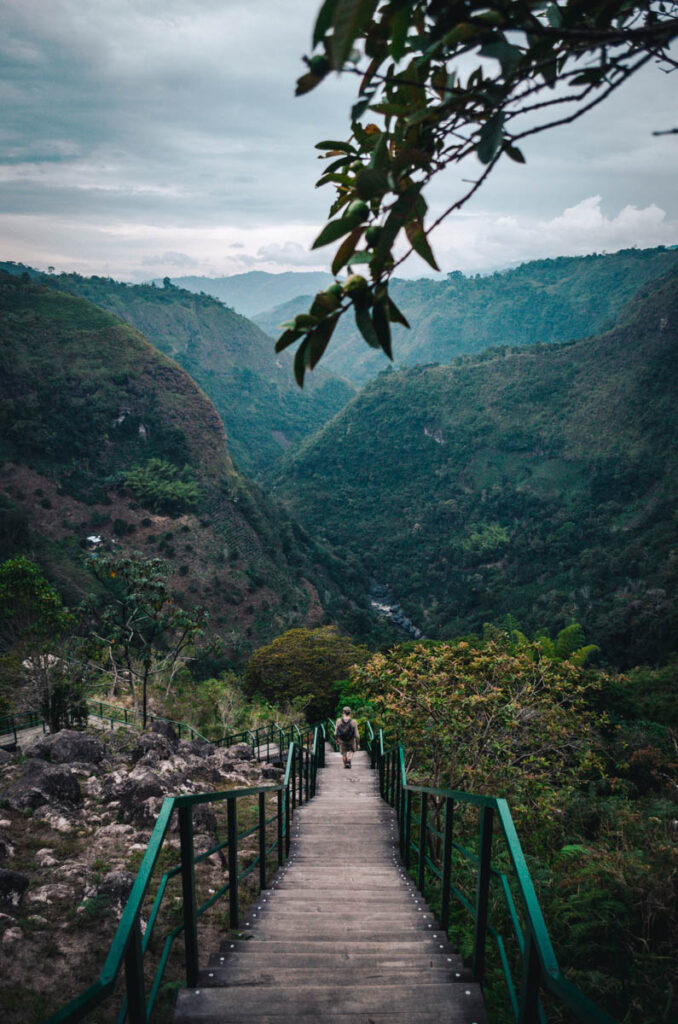
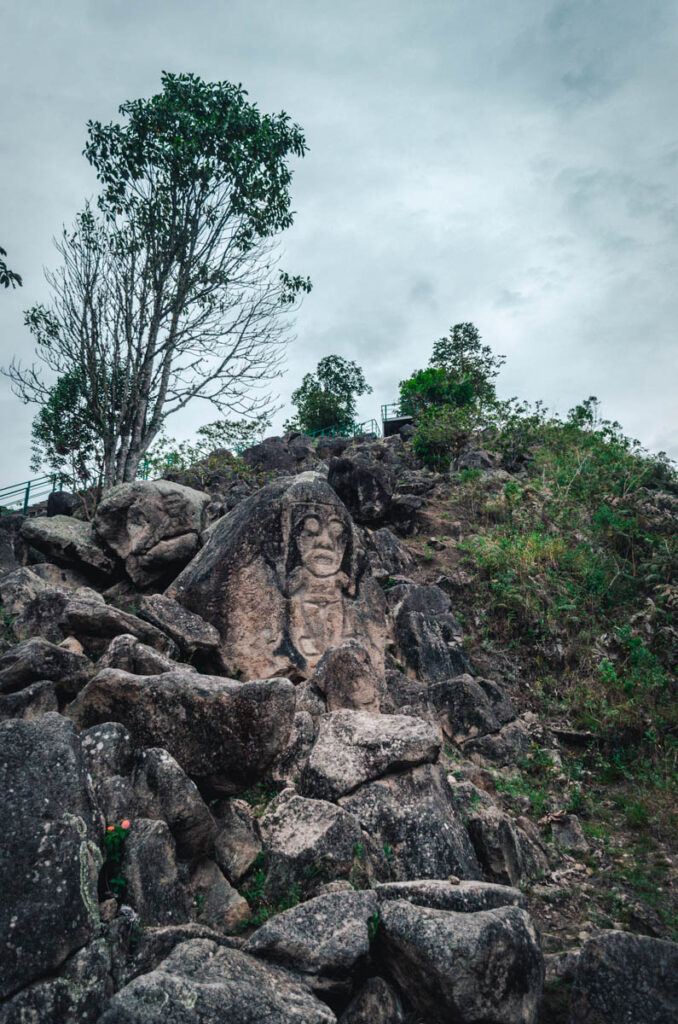
La Chaquira
The carvings at La Chaquira are believed to have significant religious and ceremonial importance. The site’s location overlooking the river valley suggests it may have been used for rituals or as a sacred observation point.
Reaching La Chaquira involves a hike through beautiful natural scenery. It can done on a half-day trip from the center of San Agustin on foot and offers a more adventurous and immersive experience compared to other parts of the park.
Alto de las Piedras is a more secluded part of the San Agustin Archaeological Park, offering a quieter and possibly more reflective visit. It is, just like Alto de los Idolos, located near the town of Isnos but further north.
A highlight of Alto de las Piedras is the “Doble Yo” statue, one of the largest and most unique sculptures in the entire San Agustin complex. This impressive monolith is characterized by its depiction of two figures, which has led to various interpretations of its symbolic meaning, possibly representing duality or a shamanic vision.
Furthermore, you can also find funerary structures and tombs, similar to the ones at the main park and Alto de los Idolos.
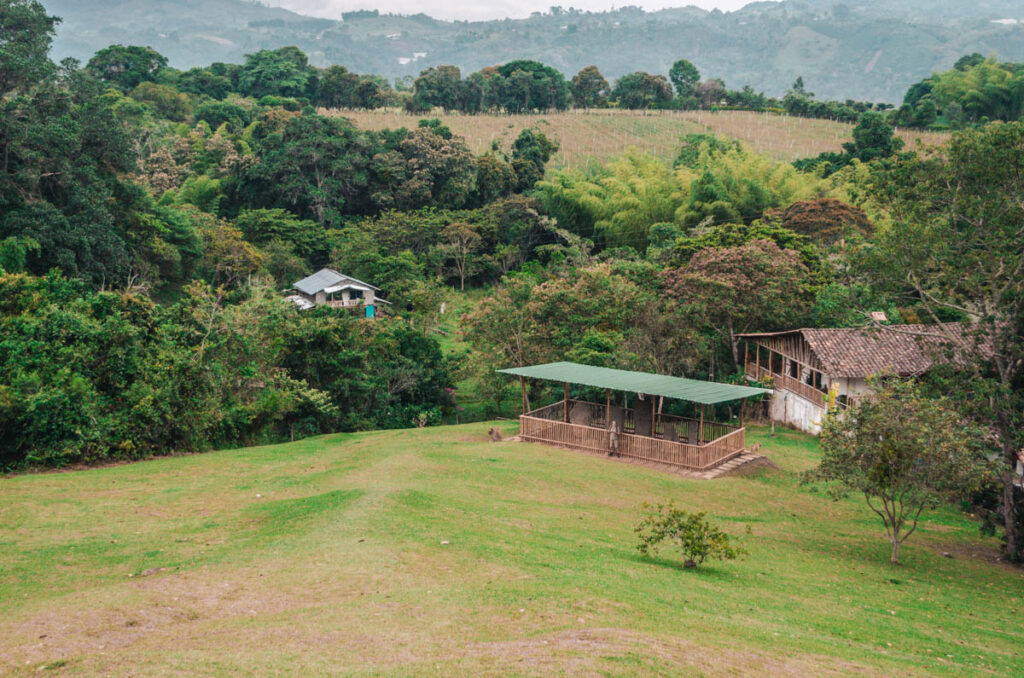
El Tablon
El Tablon is a small site in San Agustin of only five megalithic sculptures. They can be found on a large grassy field near the entrance of a small museum.
El Tablon is located on a street that leads to La Chaquira, so it is easy to combine these two sites on a half-day trip.
There is no real “entrance” to El Tablon. You can find an open gate to the grass field just before the entrance to the museum.
El Purutal is another great site within the San Agustin Archaeological Park. It stands out because of the presence of colored statues. Unlike the majority of the monolithic sculptures in San Agustin, which are typically monochrome, the statues at El Purutal retain traces of their original paint.
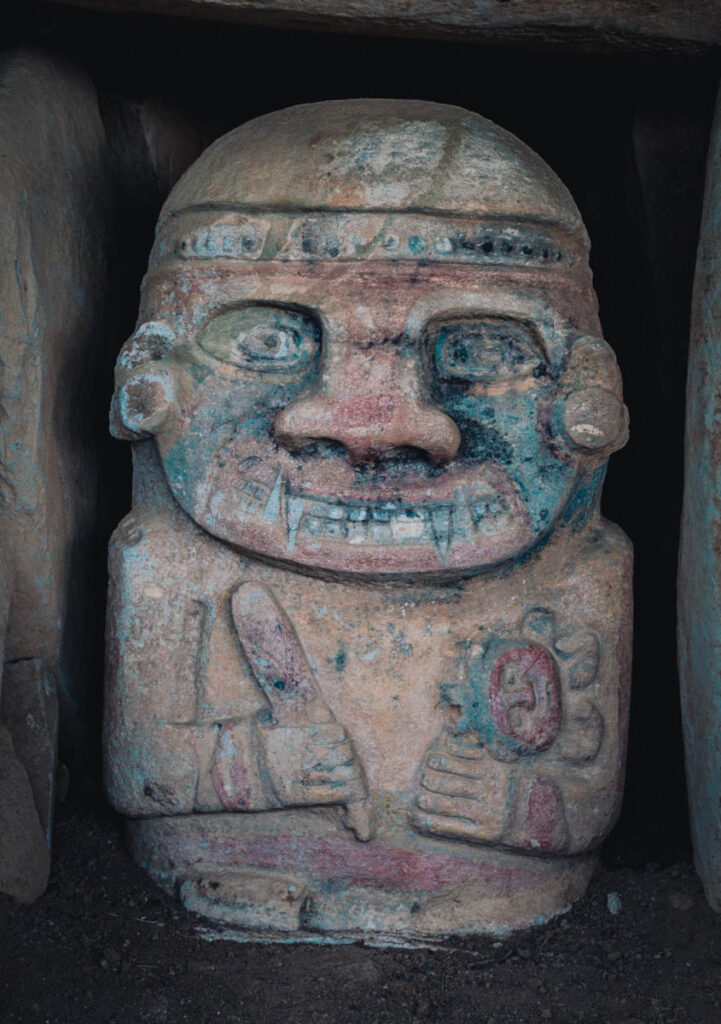
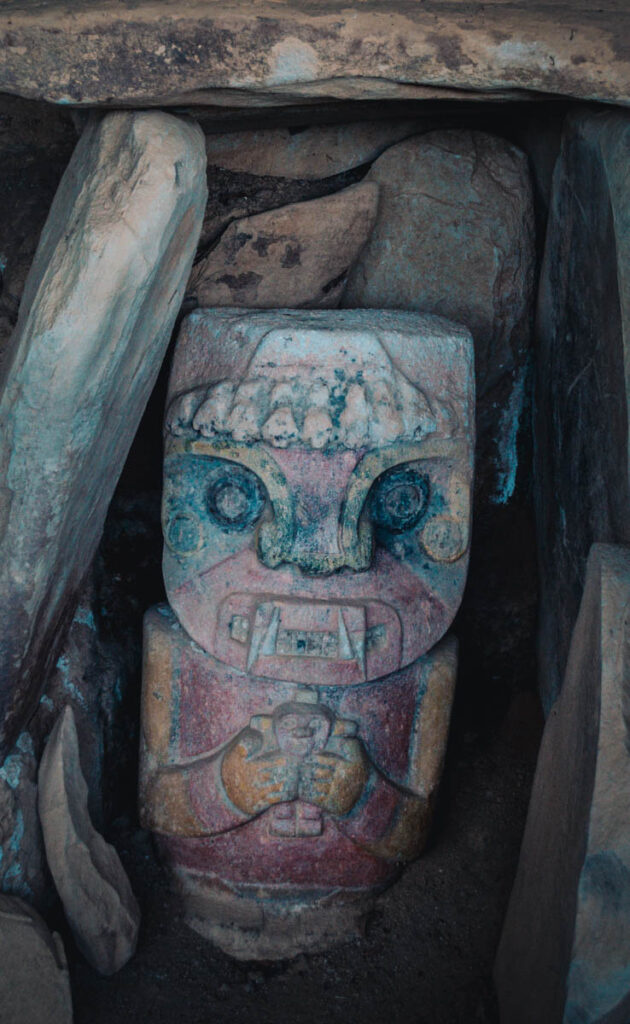
The life and death statues of El Purutal
This feature provides a rare and valuable insight into the use of color in pre-Columbian art and how these ancient sculptures may have originally appeared. The discovery of colored statues at El Purutal has been crucial for understanding the artistic practices of the ancient culture that inhabited this region.
There are only two statues at El Puratal, one depicts life while the other one depicts death. Another great thing about these statues is that they are still located at their original founding place.
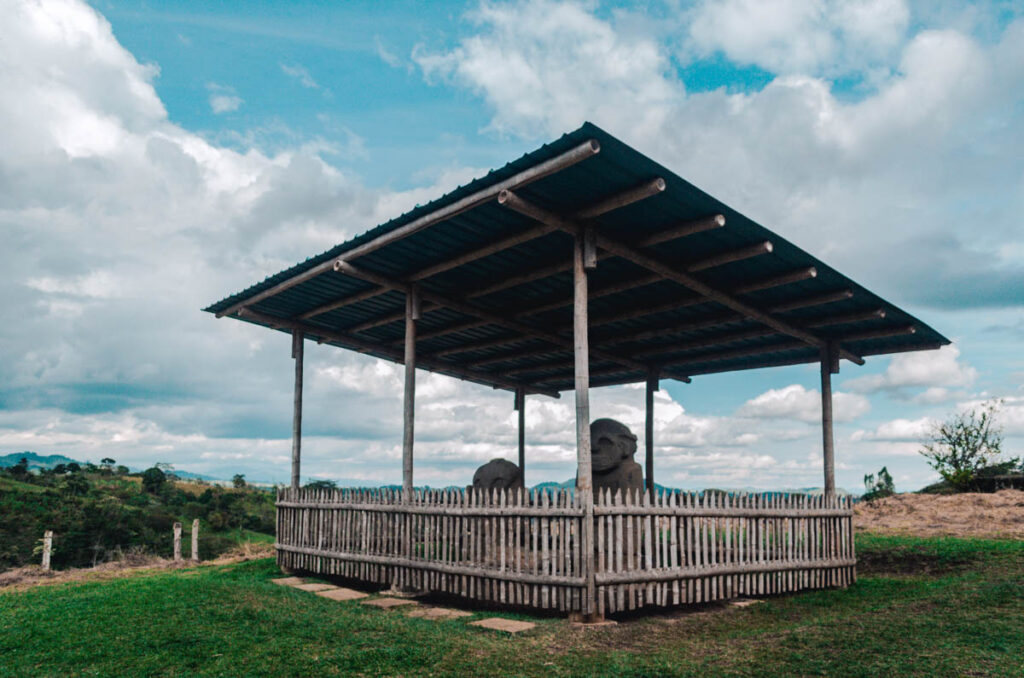
La Pelota, San Agustin
La Pelota is another intriguing site within the San Agustin Archaeological Park in Colombia, though it’s less well-known compared to some of the other sites.
It is however located just next to El Purutal and can therefore be visited together on the same half-day hike. You can find only two statues at La Pelota that look similar to the ones at the main Archaeological Park.
They are however still located at their original founding place, on a mountain overlooking gorgeous natural scenery, and therefore offer a much more magical and mystic experience.
Here are the websites I use when I travel to Colombia:
Booking.com: For the best guesthouses, homestays, or small hotels
Hostelworld: To find the best hostels located in the cities
Homestay: For a unique immersive homestay experience in the big cities or the countryside
Busbud and Redbus: The best transport websites for long-distance buses in Colombia. Note that 12Go also works in Colombia but the tickets they will buy for you are open-seat tickets and don’t guarantee a seat on the bus you book online.
Uber: Uber is a convenient and cheap ride-hailing app that can be used in the bigger cities of Colombia. Other apps are Cabify or Didi.
Skyscanner: For affordable flights to Bogota and intercity flights in the country.
Viator and Get Your Guide: book all kinds of activities from the Ciudad Perdida trek to a guided private tour of Comuna 13 in Medellin.
Citizens of many countries, including the United States, Canada, the European Union, Australia, and New Zealand, do not require a visa for short tourist stays (typically up to 90 days). However, this can vary, so it’s always best to check iVisa for the specific requirements for your nationality.
If you’re looking for travel insurance, the one with the best benefits online is undoubtedly Heymondo! It’s very easy to ask for a quote on the website and, if you book with this link you’ll get 5% off!
Access mobile data immediately when entering the country with a Colombian E-sim or a Latamlink E-sim when traveling through multiple countries. If you are already in Colombia, the best local prepaid sim card is Claro.
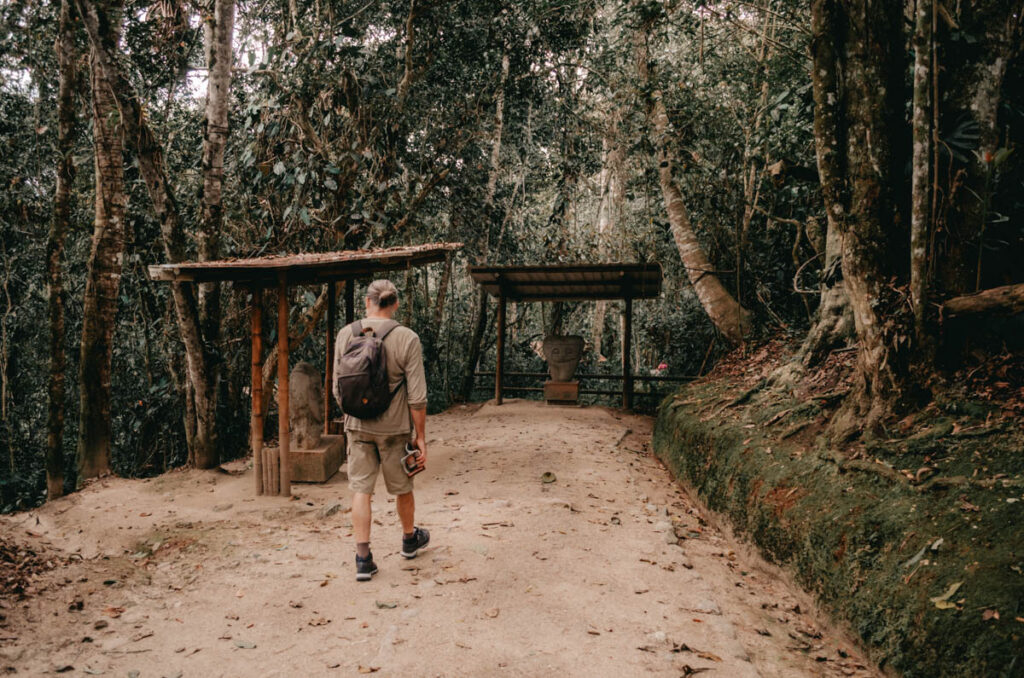
Deciding whether to visit all the sites within the San Agustin Archaeological Park depends on several factors, including your interests, time available, and physical mobility.
While the main Archaeological Park, El Tablon, La Chaquira, La Pelota, and El Purutal can be visited on foot from the center of San Agustin, Alto de los Idolos and Alto de las Piedras are located further away and will require transport like having a motorbike or hiring a taxi. Another option is to book an organized tour.
Having spent a week in San Agustin, I highly suggest to take your time to visit all the sites around San Agustin, especially if you want to cover them all on foot from the center.
If you have little time on your hands, the best way to make the most of your time is by booking a two-day tour.
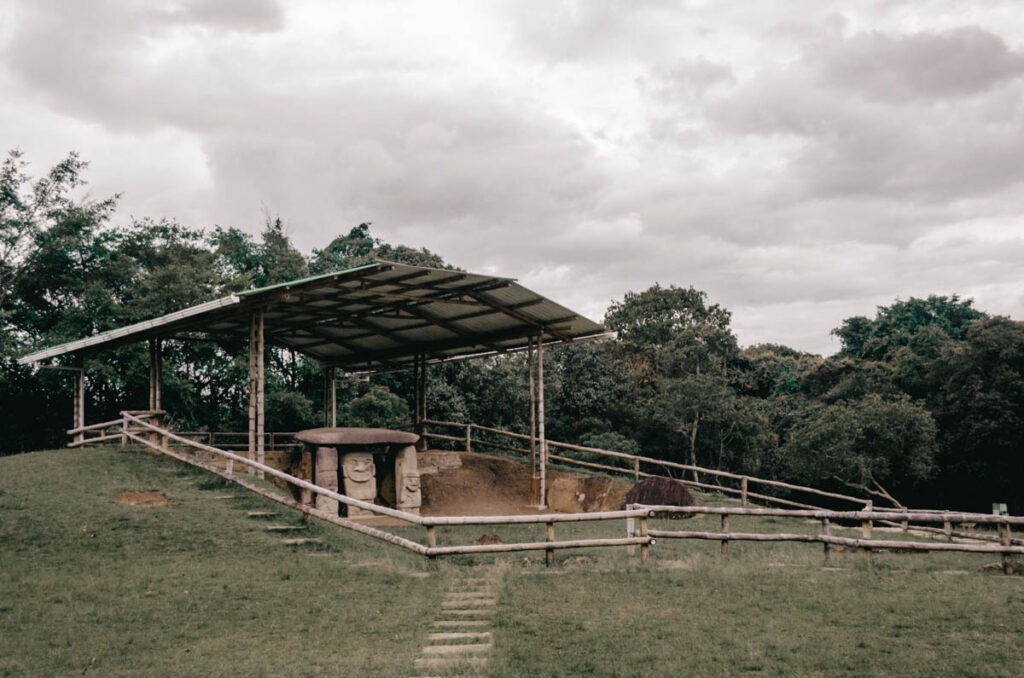
If you want to visit all the above-mentioned sites of the San Agustin Archaeological Park on your own then you should have at least four full days in your itinerary to explore these sites.
Here is an itinerary for four days!
The main Archaeological Park can be done on day one and is about a 45-minute walk from the center of San Agustin. The park is quite big so you should budget at least three to four hours to explore the park thoroughly.
There are two roads from town leading to the main Archaeological Park. I highly suggest not taking the main paved road that leads to the park. It’s a rather unpleasant walk with a lot of traffic and there are no decent sidewalks.
Instead, take the road that starts at Carrera 17 in town. This takes you through a more rural area of San Agustin and, even though it’s a lot of uphill hiking, is much more pleasant.
The entrance to the park costs 65.000 COP and you will receive a bracelet as proof that you have paid the admission fee. The ticket is valid for two days and the bracelet also gives you access to Alto de los Idolos and Alto de las Piedras.
Since the admission bracelet is only valid for two days, day two is the ideal day to visit the sites of Alto de los Idolos and Alto de las Piedras, which are located outside of San Agustin, near the town of Isnos.
It is too far to walk all the way from San Agustin to Isnos so the best way to visit these sites is to rent a motorbike or book a private transfer.
Your guesthouse or hotel can make the necessary transport arrangements. While San Agustin has some tourist infrastructure, it is not that clear where you can rent motorbikes and you should always look out for taxi scams.
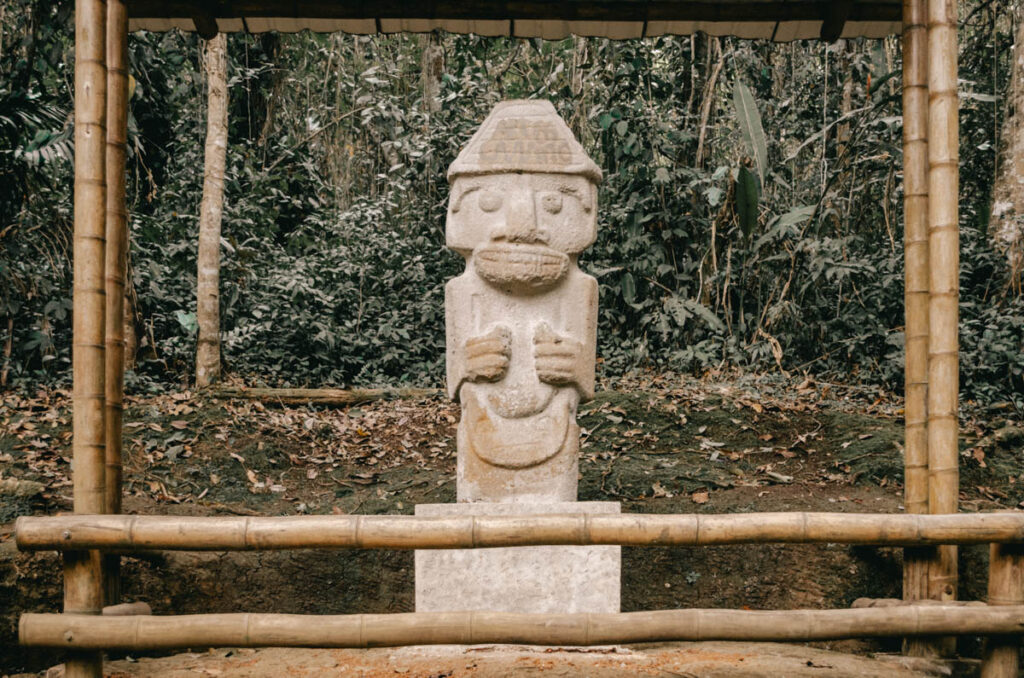
On day three, you can start a half-day hike to El Tablon and La Chaquira. El Tablon is located on the way to La Chaquira and therefore they make a great combination.
The road is pretty hilly so budget enough time to visit both these sites and to make an occasional stop to rest. You can find a house that sells drinks and snacks at the entrance of La Chaquira.
There is no admission fee for La Chaquira and El Tablon.
On your last day, you can make a half-day hike to La Pelota and El Purutal. These sites are the most remote of all the previously mentioned sites and it is quite a walk over hilly terrain to get there.
Also, make sure to download Maps.me, an offline GPS because you won’t have any data reception with a Colombian sim card to find the way.
At the entrance of both sites, you can find a small bar that sells drinks and snacks and they also manage the entrance fee to the sites which is 8000 COP per person at the time of writing (Dec 2023).
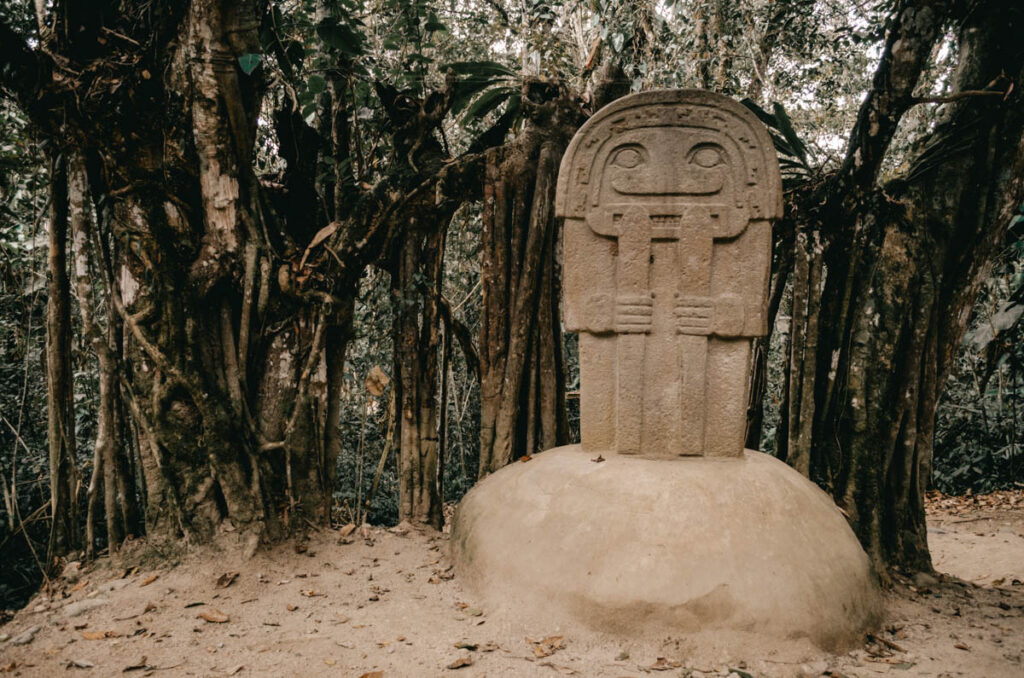
Statues at San Agustin Archaeological Park, Colombia, Latin America
If you have little time on your hands or if hiking isn’t your thing, you can book tours that can take you to all the above-mentioned sites in two days.
They can easily be arranged through your hotel or guesthouse and often include other attractions aside from the archaeological sites like waterfalls around Isnos and the Estrecho del Magdalena.
A popular way to visit the sites close to the center of San Agustin is by horseback. While I, as a vegan, do not support horseback riding, it is an option to consider if you are not fond of hiking.
If you are keen to book your experiences well before arriving in San Agustin, here are some suggested tours that can be booked online:
There is more to San Agustin than just visiting the archaeological sites! The landscapes around San Agustin are amazing and include several waterfalls like the Cascada El Cinco, located on a private coffee finca and the Estrecho del Magdalena, where the river narrows to only 2 meters in width.
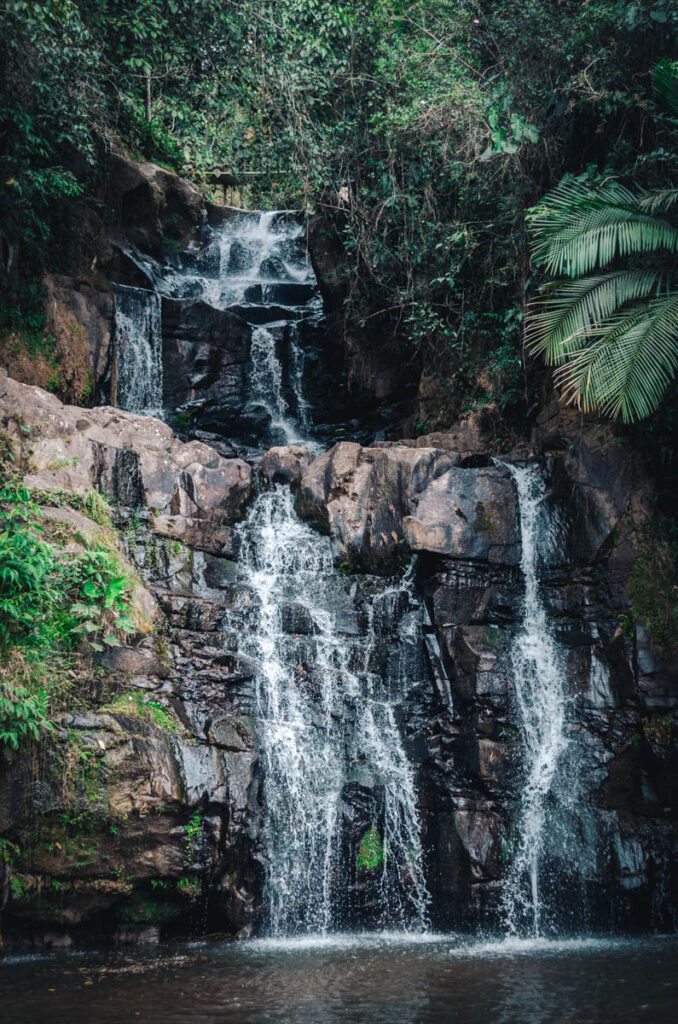
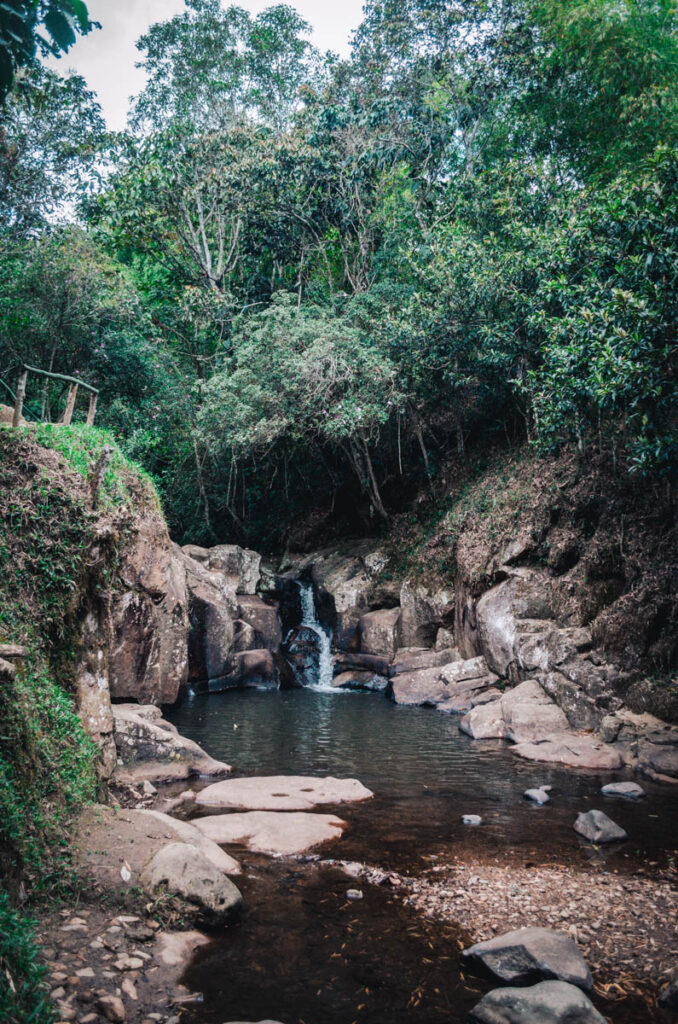
El Cinco waterfall
That said, San Agustin town itself is one of the most charming places I have encountered during my trip through Colombia. It is not well-known already among foreign tourists so retains an authentic charm yet it provides all you need for a comfortable trip.
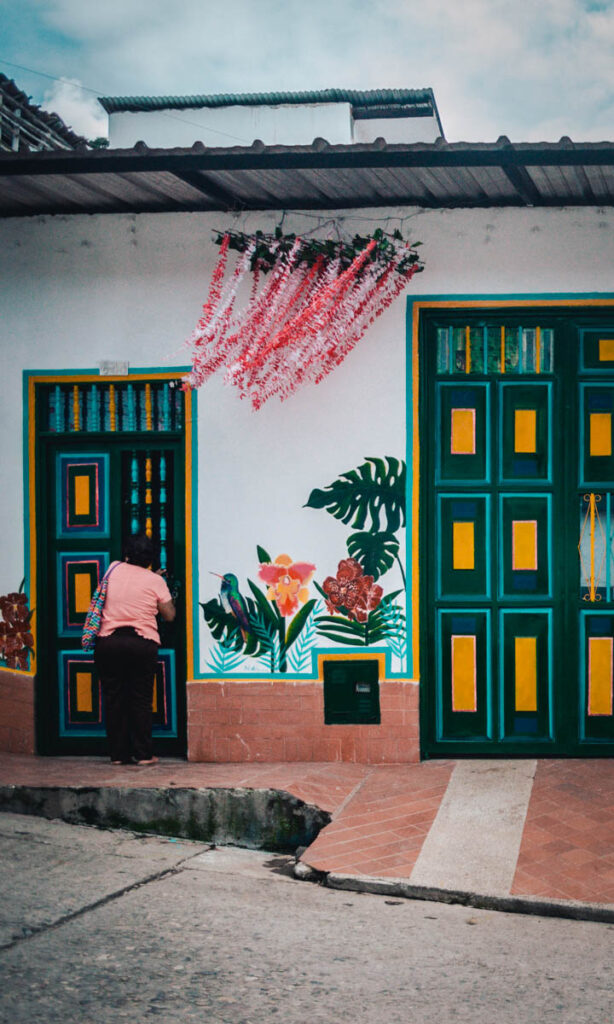
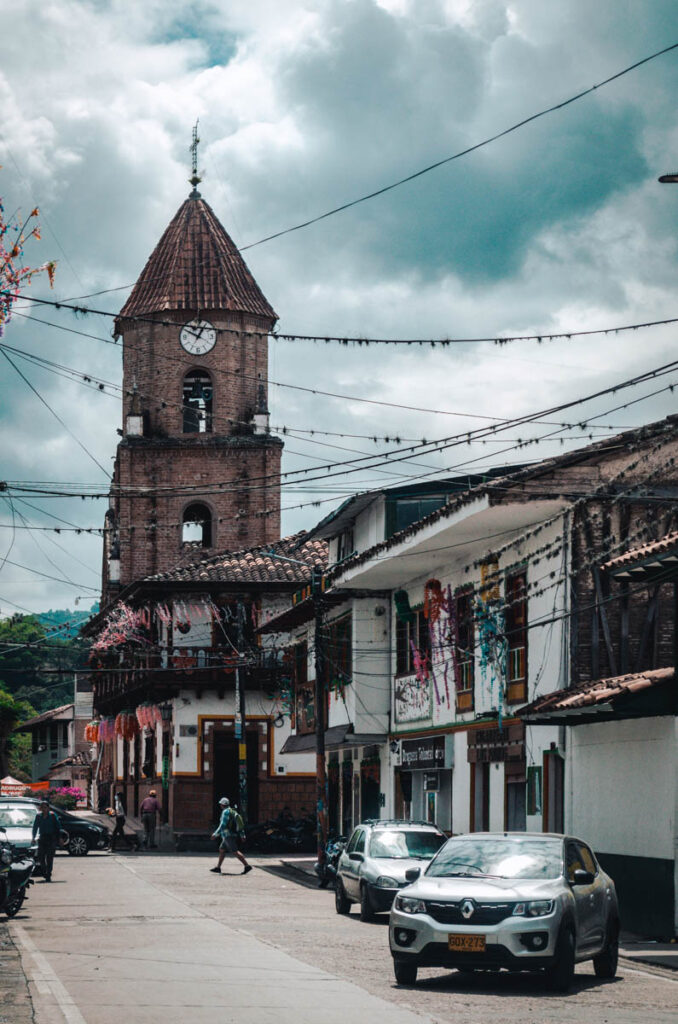
The colorful streets of San Agustin
It also boasts a bit of a bohemian vibe, with artisans creating beautiful bags, bracelets, and ponchos according to their ancestral heritage and you can even find a vegan coffee roastery and a wonderful vegetarian restaurant in town.
Read my full San Agustin travel guide to find out more about this place beyond the archaeological sites!
There is no shortage of wonderful accommodation in San Agustin! While the town center may seem the most convenient to stay in (and in theory it actually is) I highly recommend opting to stay in the mountains around the town center.
The views from these accommodations are absolutely amazing and you will sleep much better away from the buzz of the town.
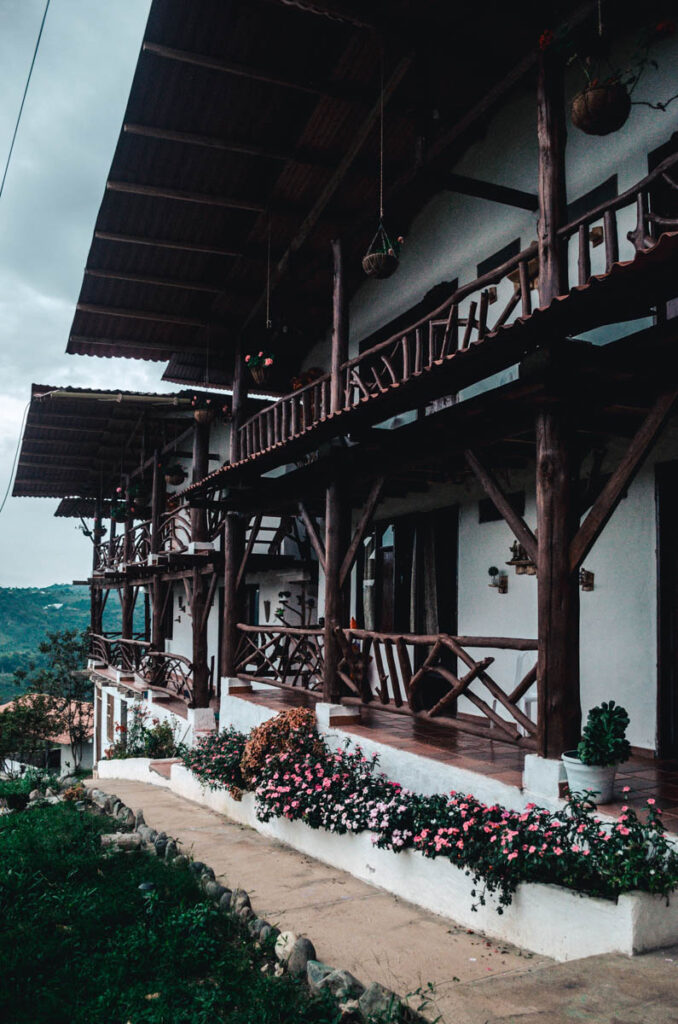
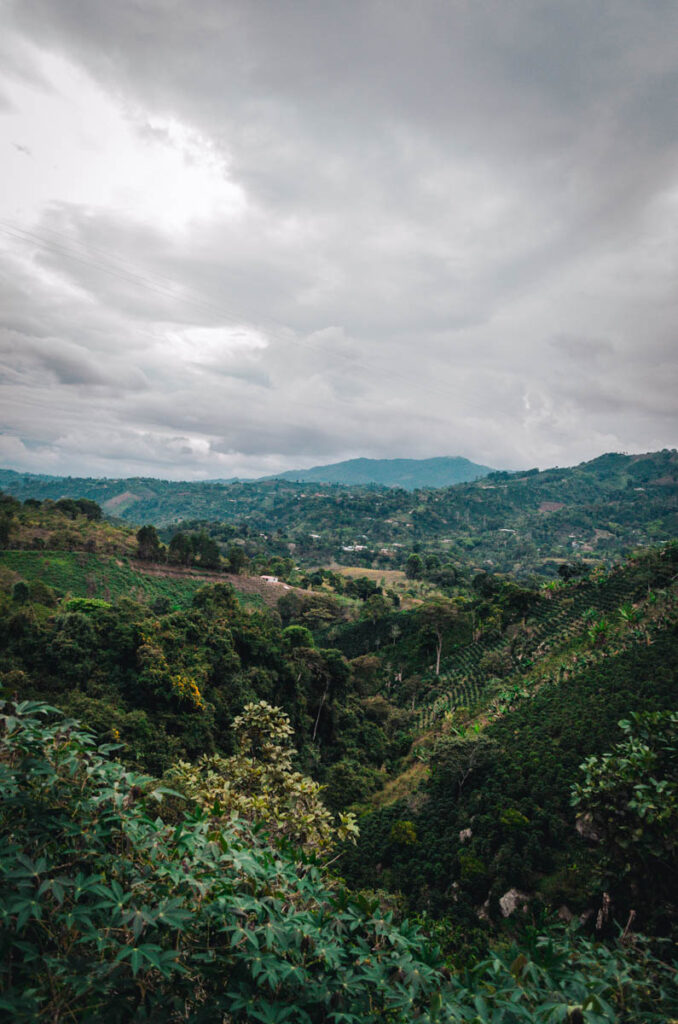
Antahkarana hotel, San Agsutin
Staying in the mountains means that you will probably need to walk for about 15 minutes to the town center but trust me, it’s worth it.
Here are some great accommodation options for sustainable and slow travelers who want to visit San Agustin:
There you go! I hope you enjoyed this guide to all the archaeological sites in and around San Agustin.
A lovely next stop on your itinerary is Popayan, a wonderful white city with a cozy atmosphere from which you can make a day trip to the Guambiano Market in Silva.
Let me know in the comments below if you have any questions or drop me a message through my contact page.
Also, don’t forget to check out my resources page with my favorite booking platforms and tips to start planning your trip. Additionally, have a look at my favorite travel gear if you want to pack more consciously!
ENJOY!
Disclaimer: This post may include affiliate links. If you click on them, I may receive a commission at no extra cost to you.
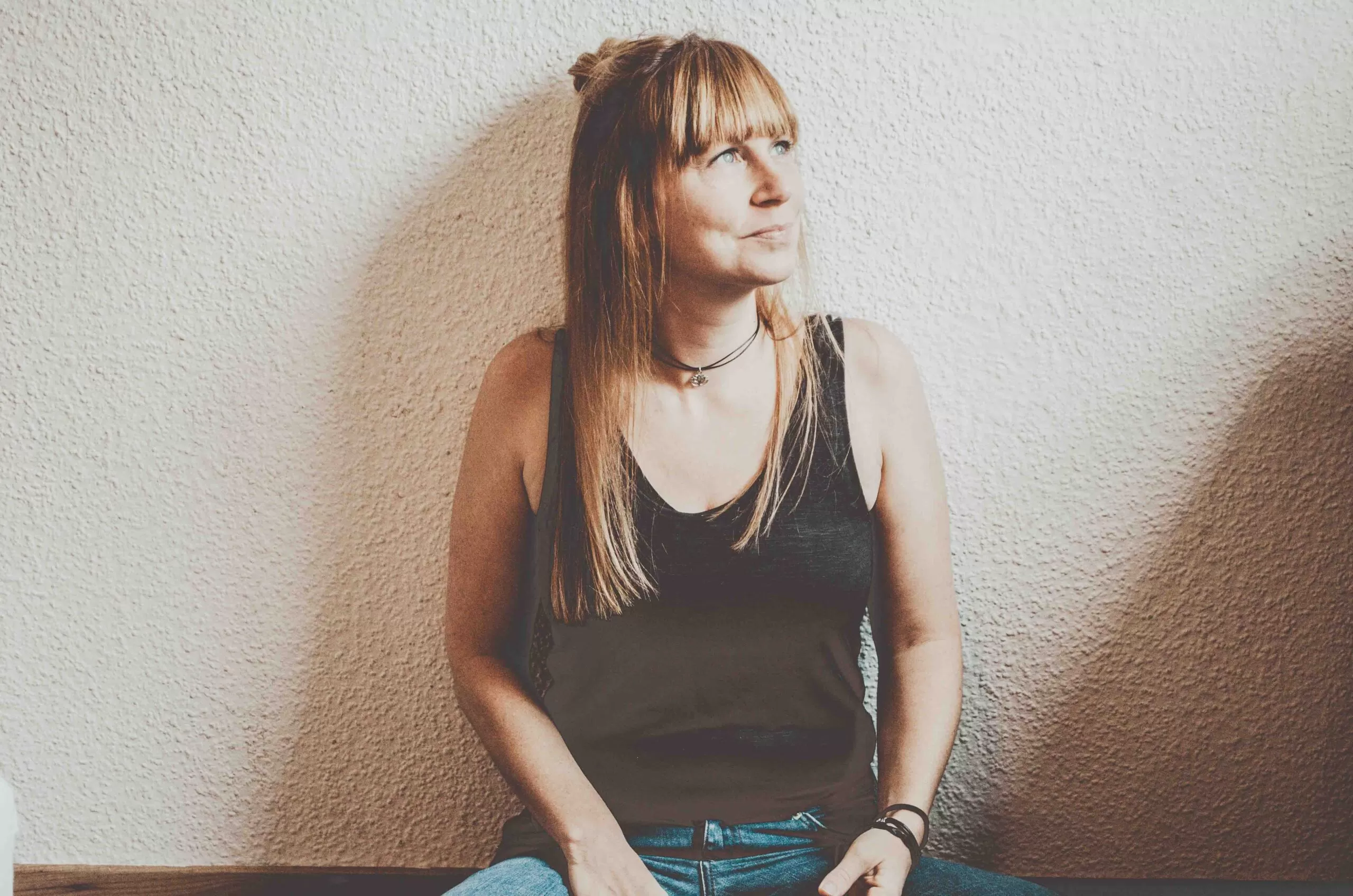
Hi! I am Annelies and this is Travelers & Dreamers, a blog about conscious travel which means traveling in a more mindful way, with a positive impact on the world and yourself!
On this website, I cover different topics like slow travel, plant-based food guides, responsible travel, sustainable packing, eco-travel, and more!
Latest Posts

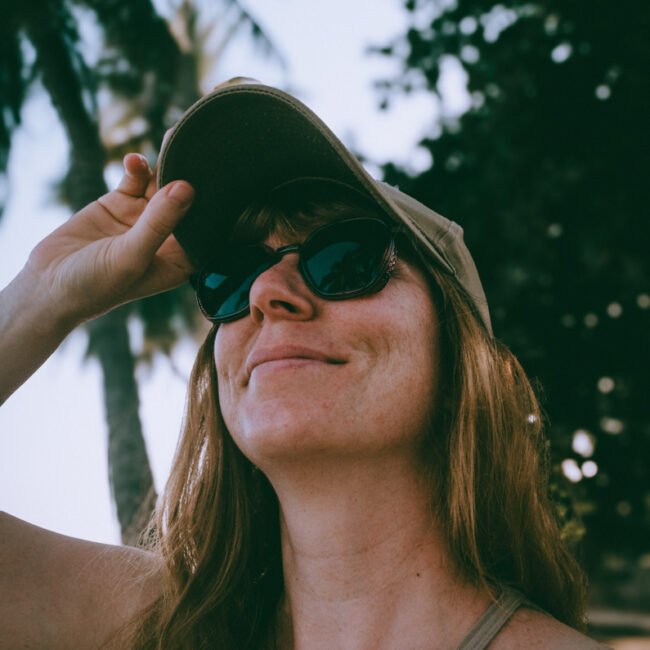
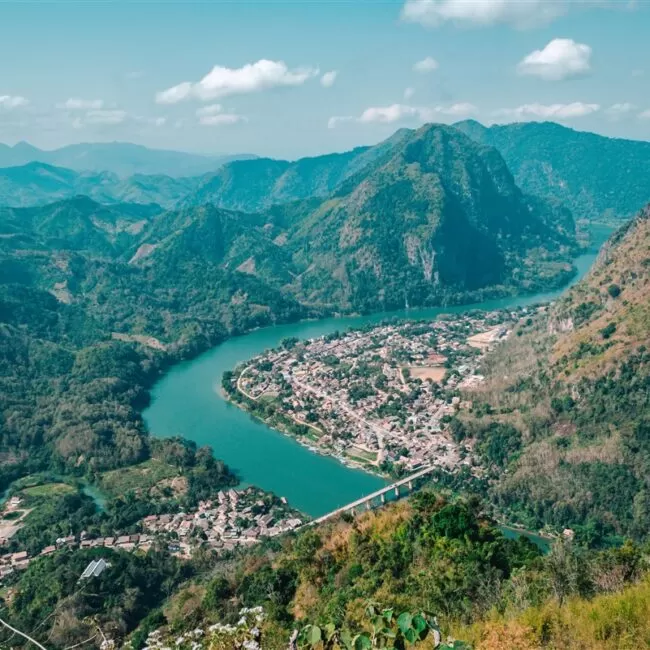
15 Best Things to Do in Nong Khiaw, Laos (2024)
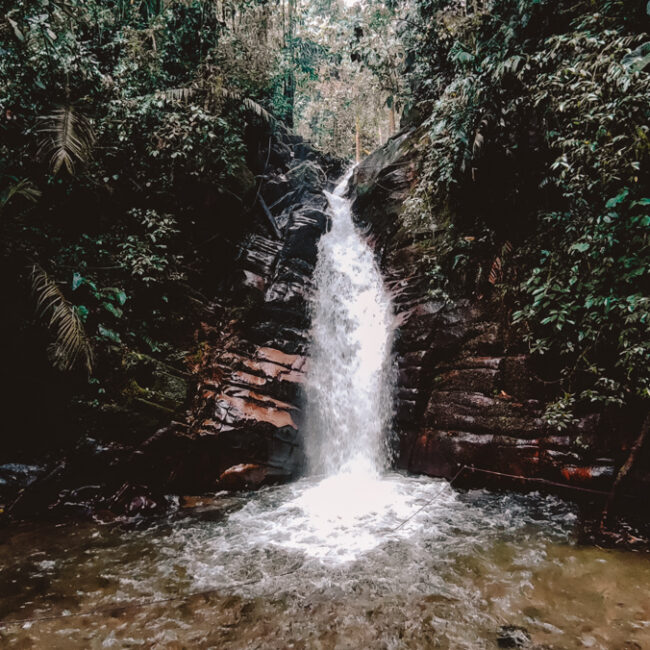
Santa Rita, Salento: All You Need to Know
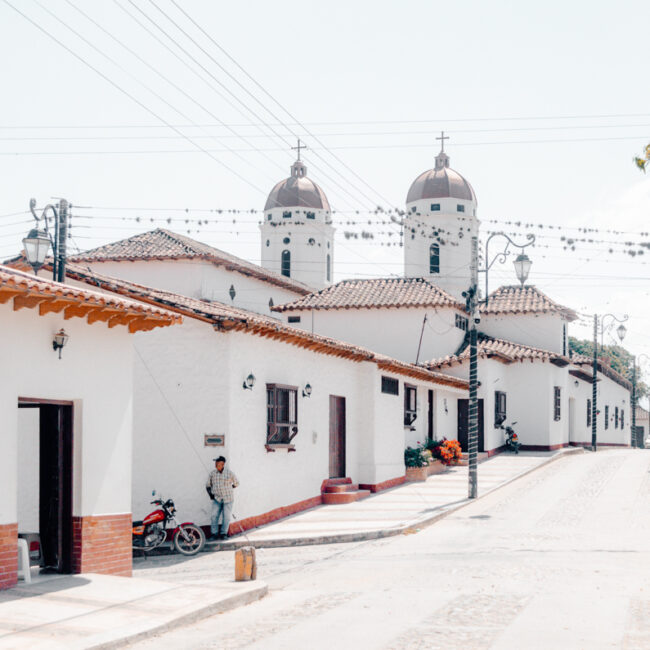
La Playa de Belen, Colombia: An Easy Travel guide!
Do you want to receive my latest finds on conscious and sustainable travel directly to your inbox? Subscribe here!
© COPYRIGHT TRAVELERS&DREAMERS, 2023.